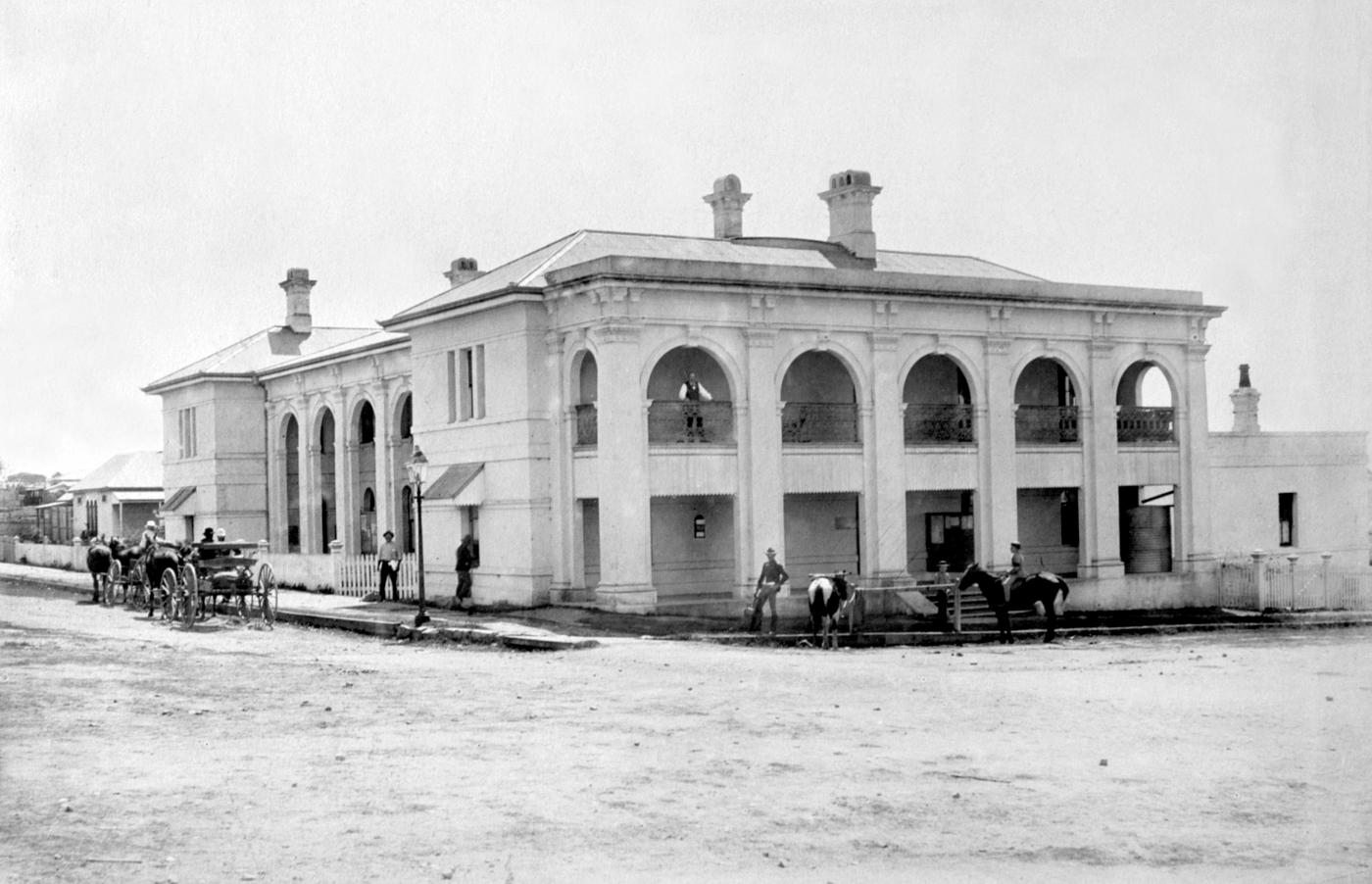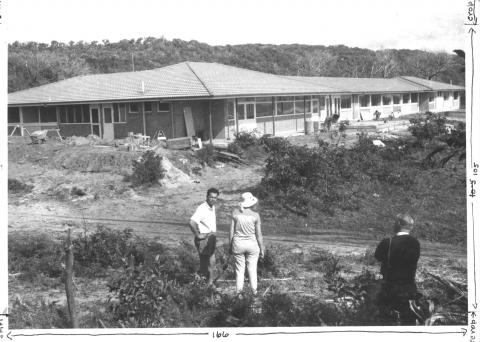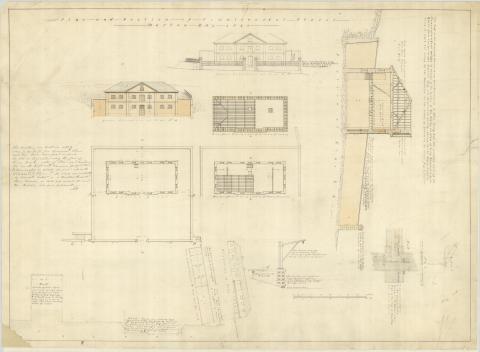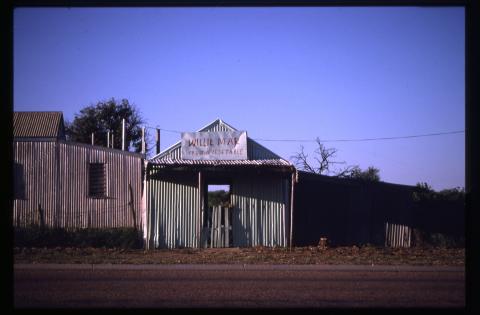
- News of the Day
-
Logan Witness, Saturday 7 July 1883, page 4
A Peep at Bowen.
Over the way is another hotel, and in the bar of it, which remains open, or rather not closed, is decernible a lone, sad-faced woman, whose features flush with a transient glow of expectation as we draw near the portal, only to fade into a melancholy resignation as we pass without entering. By-and-bye we reach the post-office, quite a grand structure, with a courthouse annexed, in which we learn a Judge of the Supreme Court dispenses justice. If this functionary has anything to do, the surmise is unavoidable that he is a Draconian Judge, and has sent all Bowen to gaol except the bishop and the gins. But this theory becomes untenable. The mail has been delivered, and the post-office is opened for its delivery. A casual Bowenite saunters across the street, and joins our group. He asks if there be any news, and remarks that he sees the post-office is open, and that he will go and get his letters when “the throng is over.” The “throng” consists of two small girls, a constable, and a bushman, waiting languidly outside the delivery window. It begins to dawn upon us that we have exhausted Bowen. But this presumption would be premature. One of us wanders through the bush into its outskirts, and comes upon a strangling, forlorn suburb, which, presumably because it was once the fashionable quarter, is called “Belgravia. The glory of the Bowen Belgravia— if it ever had any— has departed. But it contains one inhabited house, although, it is true, its tenants are the family of a chance squatter. I did not mean a squatter in the Australian sense. In the Bowen “Belgravia” temporarily resides, with his wife and family, a worthy old comedian, named George Simms, whom I remember as the main prop of the now defunct 'City of London ' Theatre in its palmy days. Travelling the colony with a modest “show,” the old actor has grounded in the shoal water of Bowen, where, while he waits for the Queens Birthday — when he hopes for a “house” that will enable him to move on again — he has temporarily laid aside the sock and buskin for the paint brush, and is painting signs for Bowen tradesfolk. One triumph of his art he pointed out with conscious pride, adorning the front of a baker's shop, with the legend, “Experientio dough set.” This brilliant play on words, it appears, so electrified Bowen that quite an active trade in new signs has set in. He has actually painted two since. — Forbes Letters.
- History Tour
-
The building was designed in the Colonial Architect's office during the time when FDG Stanley was the Colonial Architect. Within the office, the design of the building is attributed to GS Connolly, who later became Colonial Architect himself. Both architects excelled in the classical revival style chosen, which was thought well suited to public buildings intended to convey a sense of stability and dignity, particularly a court which represented the power of the law. The building is on a corner site and designed so that the major street elevations each represented a separate function housed within the building; that to Herbert Street representing the Court and that to Williams Street the Post Office. The two elevations are linked stylistically by the use of arcades.
Courtesy of the Australian Heritage Database
/148.2473033,-20.0130233,7/450x450@2x.png?access_token=pk.eyJ1IjoicXNhLWRpc2NvLXFsZCIsImEiOiJjamJmdTgyZXEyeWNjMnlxZm8xcmtieHgxIn0.lmT9J5tTPKGuuccQgCVSAg)



